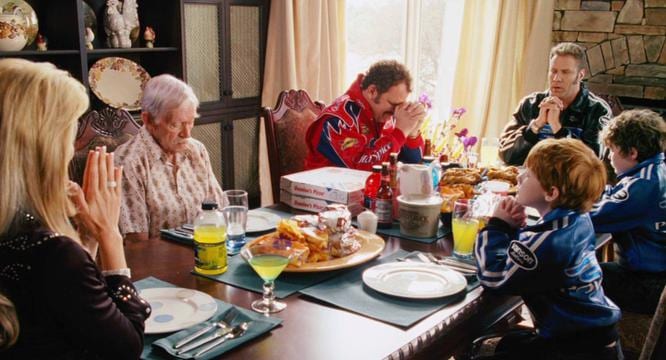The following post was originally published on @ppetite, the Ketchum food blog.
At some point it’s entirely possible you will be invited to celebrate Thanksgiving with an American – a colleague, a client or maybe someone you met on public transport. This is because many of us see it as the best holiday ever (#best.holiday.ever) and believe it is our moral and civic duty to introduce it personally to as many foreigners as possible, even when living abroad.
 I’m speaking of course of the U.S. version of Thanksgiving. I know Canadians celebrate it too, on a different date, and bristle when we call it ‘American’ as if they didn’t occupy twice as much of the continent as we do, but whatever. I have limited space. And patience.
I’m speaking of course of the U.S. version of Thanksgiving. I know Canadians celebrate it too, on a different date, and bristle when we call it ‘American’ as if they didn’t occupy twice as much of the continent as we do, but whatever. I have limited space. And patience.
Anyway, don’t panic. I’ve hosted Scots, Belgians, Aussies and even a German or two at various times in the 12 years I’ve been abroad, and I’ve got your back. Follow these tips and you’ll survive and quite plausibly enjoy the experience.
1. It’s all about food. Yes, yes, the first Thanksgiving ostensibly took place in 1621 in what is now Massachusetts, when English settlers sat down with Wampanoag native Americans to celebrate the autumn harvest and surviving another year in the New World – something that had previously eluded many of their fellow pilgrims but of course a feat the Wampanoags had achieved many thousands of times, before eventually succumbing to the venereal diseases introduced by the Europeans. But that’s not what Thanksgiving is about!
We SAY it’s about expressing gratitude for our many familial, spiritual and material blessings, but it’s really all about food … ingesting heaping servings of dense protein and complex carbohydrates in a very brief period of time. Most Thanksgiving meals will include enough calories to feed large swathes of the developing world for a month, so you’ll want to skip breakfast and wear trousers with an elastic waistband – what my friend Rob calls your eatin’ pants.
2. Don’t be a vegetarian. Well, you can be, but the traditional Thanksgiving meal is centered around a large turkey. Usually these are roasted in the oven until dry as a dead dingo’s backbone, but recipes vary. My cousin Brandon smokes his in a big wood fired BBQ smoker, but he lives in Oklahoma and would smoke waffles if someone suggested it. My friend Tracey likes to deep-fry hers. Why not?
If you must be a vegetarian, you will probably be offered stuffing as a substitute. Avoid this. Most likely it’s just mushed up sausage, bread and the turkey’s internal organs euphemistically called ‘the giblets.’
Side dishes are usually safer if meat is not your thing. Corn, carrots, and green salads are usually on offer, and most families will have a version of a green bean casserole and candied yams or sweet potatoes.
3. Bring wine. Nobody wants to arrive empty-handed, and flowers are always nice, but nothing beats a nice bottle of wine. Most tables will be set with a carefully paired Viognier or a pinot noir (although Decanter says non – go with a Burgundy), so rather than appear to second-guess the host, maybe something bubbly to start things off?
4. Get ready for some football. We know, we know, real football is sooo much better than American ‘football’ with all of its starts and stops and ridiculous advertising breaks, but give it a rest, just for today. Growing up in Texas, we were not allowed to have a game (not a ‘match’) on during the actual meal, prompting us to invent reasons to step out and check the score secretly; eventually diners were scheduled so as not to interfere.
5. Save room for pudding (dessert). This is often the second center-piece of the meal, frequently in the form of pumpkin pie. I don’t know why, when modern pumpkins probably were not around during the first Thanksgiving. But anyway, pumpkin pie takes many forms but you’ll want it with vanilla ice cream or custard, preferably with a little brandy or Calvados (to aid digestion, I’m told).
I could go on, but I don’t want to spoil all the fun.